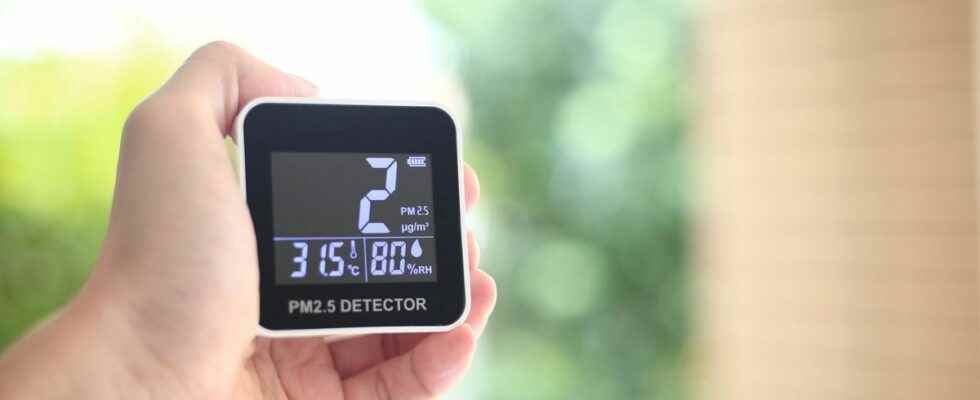Published on
Updated
Reading 2 mins.
In recent years, micro-sensors have become popular. But what are they for? How do they work? To better understand their effects, ANSES has looked into these ingenious devices for measuring air quality.
In a garden, at the office, at home… All day long, we breathe in air that is more or less harmful to our health. This is why many individuals and professionals – worried about its potential deleterious effects – install, at home or in business, sensors used to measure the rate of particles in the air.
A promising tool for measuring pollutants
Deployed indoors, outdoors or even carried on your person, these innovative tools mainly measure the rate of particles in a room. To know : “particles (PM10 or PM2.5), carbon monoxide or volatile organic compounds”.
Easy to install and sometimes inexpensive, they are also deployed to find out the carbon dioxide level in busy establishments. The goal? “Detect when air renewal actions are necessary: aeration, increased ventilation”stresses ANSES.
Good points therefore, but which are not enough to convince all the experts, who perceive these tools as a “complement” to the measurement stations deployed in large cities by the monitoring networks.
“The use of micro-sensors must be supported to lead to lasting changes in behavior, such as changing travel habits or acting on certain sources of indoor pollution (kitchen, chimney fires, etc.) and ventilation”explains Emmanuelle Durand, coordinator of this expertise at the Agency.
Beware of sensors sold on the market
On the screen of the box, the correct reading of the information is crucial.
“The data obtained via these tools must be correctly interpreted: they do not reflect a possible risk to the health of the individual but rather the levels of exposure to certain pollutants present in the air”underlines the expert.
In principle, these micro-sensors are therefore very promising, but it will still take a little time (and education) to set them up at home.
Also note that some sensors sold on the market overestimate or underestimate the pollutants measured. They therefore only deliver “trends”.
In fact, the Health Agency considers that air quality sensors are useful for measuring certain pollutants, such as fine particles or CO2, but that they should not be used for others (exit pesticides).
